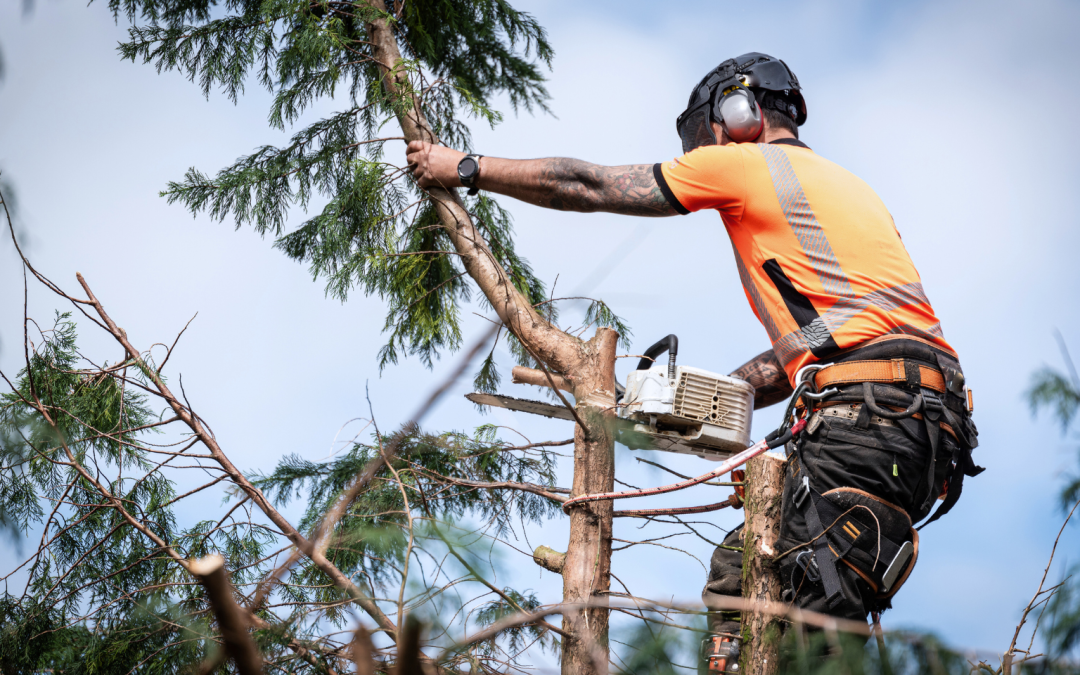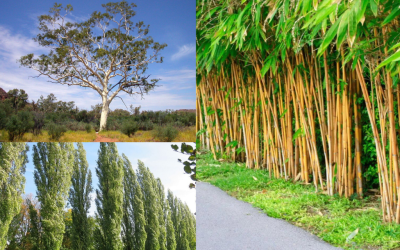Imagine planting a beautiful tree in your front yard. Fast forward, that same tree’s roots are pushing up your driveway, clogging your pipes, and threatening your home’s foundation. Professional arborists understand these risks and know exactly how to help you choose the right tree and the right spot.
It’s not just about beauty when you choose and position a tree correctly. The right choice saves you from major repairs, secures your property, and keeps your outdoor areas both attractive and usable in the long run.
Our Gold Coast arborists share how to select the ideal tree species for your space and outline considerations before planting. Proper placement now means a thriving, trouble-free landscape later.
Understand Your Space Before You Plant
Before you choose a tree, consider the space it will need both above and below the ground. Underground, tree roots can spread far beyond what you might expect. This can lead to cracked driveways, damaged pipes, and lifted paving. Above ground, a tree’s canopy may interfere with power lines or overshadow gardens and structures. Seasonal factors, such as how trees in winter respond to frost or reduced sunlight, should also influence your selection to ensure long-term health and stability.
Professional arborists use their expertise to evaluate your space, predict root and canopy growth, and recommend the best species for your yard. Our tree arborists at JC Tree Services will help you avoid future damage and costly repairs.
Consider proximity to buildings, fences, driveways, and utilities
Large trees should be at least 5–10 meters away from buildings and driveways to avoid foundation damage and leaf drop issues. Smaller ornamental trees can be planted closer, around 2–3 meters, if they have less invasive root systems and smaller canopies.
Keep trees clear of underground utilities, such as sewer lines or water pipes, and overhead power lines. Incorrect placement can lead to hazardous situations or expensive utility repairs later.
Choose the Right Tree Species
When choosing between exotic and native trees on the Gold Coast, consider whether you want a hardy, low-maintenance tree that supports local ecosystems, or a visually striking option that might need extra care. Below is a brief chart comparison:
| Type | Examples | Pros | Cons |
| Native | Eucalyptus, Lilly Pilly | Thrive in local subtropical climate; drought-tolerant once established; support native wildlife; generally lower maintenance. | Can become very large; some species have aggressive root systems; risk of branch drop (especially Eucalyptus). |
| Exotic | Jacaranda, Poinciana | Stunning seasonal flowers; provide excellent shade; popular for streets and gardens; create a tropical, decorative feel. | Can be messy with heavy flower and leaf drop; may require more watering in dry spells; roots can damage paving and pipes. |
Root System Considerations
Different tree species have different root behaviours. Some trees, like fig trees and certain large gums (Eucalyptus), have highly aggressive root systems that spread widely in search of water. These roots can travel far beyond the canopy and surface unexpectedly in lawns or garden beds.
Other species have more compact, less invasive roots. Examples include Tuckeroo and many smaller native or ornamental trees. Roots naturally seek out moisture and can directly into cracked pipes, drainage systems, and even sewer lines. Large, strong root systems can also compromise foundations. This is especially risky when large trees are planted too close to houses or hardscaped areas such as driveways and patios.
Tree Planting Mistakes Professional Arborists Want You to Avoid
Many homeowners plant a young tree too close to their house, thinking its small size won’t cause any trouble. Here are some common mistakes to watch for and how to prevent them before they start.
Planting too close to structures
- Overhanging branches can damage roofs, gutters, and block sunlight on solar panels.
- Trees too close to fences can cause leaning or force costly fence repairs.
Underestimating mature size
- Large canopies can spread into neighbouring properties.
- Mature height and width information is available on nursery tags or from arborists. Always plan for the final size, not the current one.
Ignoring council or neighbourhood regulations
- Trees like large figs or Camphor Laurels are considered invasive and may be prohibited.
- Pruning protected species without approval can result in fines.
Plant Smart – Consult JC Tree Services’ Professional Arborists Before You Plant
Many homeowners plant a young tree too close to their house, thinking its small size won’t cause any trouble. A few years later, they’re faced with cracked paving, blocked pipes, or branches scraping the roof during storms. Signs you might need an arborist inspection:
- You’re unsure about how big a tree will grow or how far its roots will spread.
- You have limited space near structures, driveways, or underground utilities.
- Your property has challenging soil conditions or drainage issues.
Make sure you speak to us at JC Tree Services about appropriate tree selection next time you plant a tree, or for any advice on your existing trees, including questions like “can I cut down a tree on my property?” – we are here for you! Click HERE to contact us for a quote.
Frequently Asked Questions
Do fig trees have invasive roots?
Yes, fig trees generally have invasive roots. Their roots spread widely and powerfully in search of water. This makes them unsuitable for planting close to structures or in small residential gardens
Do gum trees have invasive roots?
Yes, many gum trees (Eucalyptus species) have invasive roots. Because they also grow very large and drop limbs, they require a lot of space and are better suited to large properties or open areas.
Do palm trees have invasive roots?
Palm trees have a fibrous, non-invasive root system. Their roots grow from the base in a dense, shallow, and relatively contained mat rather than spreading aggressively outward. This makes them a safer choice for planting near buildings, pools, or paved areas.







